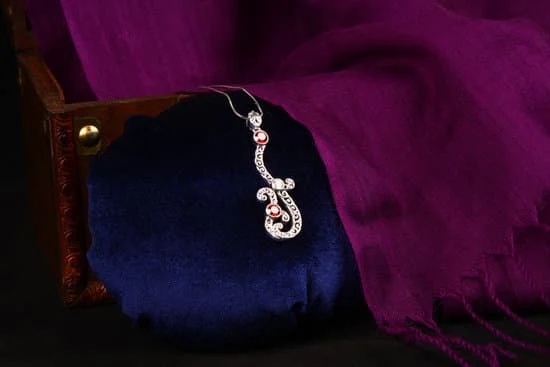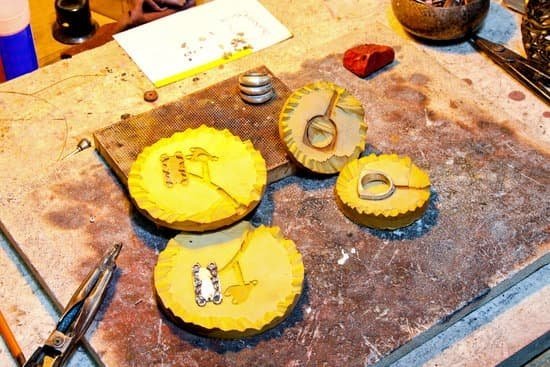Diamonds have long held a special place in the world of jewelry, captivating people with their brilliance and allure. From engagement rings to statement necklaces, diamonds are prized for their timeless beauty. However, as consumers, it is important to understand where jewelry get their diamonds from. In this article, we will explore the origins of diamonds and delve into the fascinating world of the diamond industry.
The diamond industry is a global powerhouse, with a complex supply chain that reaches far and wide. It involves various players, from miners who extract diamonds from the earth to manufacturers who cut and polish them into dazzling gems, and finally to jewelry retailers who showcase these treasures to consumers. Understanding this process can give us insight into the economic impact of the diamond industry in different countries.
A closer look at diamond mining reveals both its marvels and challenges. Diamond mining involves extracting these precious stones from specific regions and can often raise environmental and social concerns. This has led industry stakeholders to implement responsible mining practices in an effort to mitigate these issues. We will explore these efforts and examine how they aim to ensure that diamonds make their journey from the earth to elegance while maintaining ethical standards.
As our society becomes increasingly concerned about sustainability and ethical sourcing in all aspects of life, diamond certification plays a crucial role in guaranteeing authenticity while also ensuring ethical practices. Different certification bodies have established methodologies to assess the quality and origin of diamonds. We will discuss these certifications as well as the growing demand for ethically sourced diamonds and conflict-free certifications.
The jewelry industry has made strides towards curbing conflict diamonds through initiatives like the Kimberley Process. We will provide a historical background on conflict diamonds – those associated with civil wars or human rights abuses – while examining the effectiveness and challenges faced by the Kimberley Process in eliminating their trade.
Beyond traditional mining methods, alternative sources of diamonds are emerging in the form of lab-grown diamonds. These innovative creations offer environmental benefits while raising questions about their acceptance in the jewelry industry. We will explore the value and considerations associated with lab-grown diamonds, drawing comparisons to their naturally occurring counterparts.
Transparency and accountability are crucial when it comes to tracing the diamond supply chain. With its complexities, there may be potential vulnerabilities that compromise ethical sourcing. Initiatives and technologies are being developed to improve transparency in the supply chain, ensuring that responsibly sourced diamonds make their way into the hands of consumers.
Lastly, we will discuss the responsibility of jewelry retailers in promoting sustainable diamond practices. By supporting brands and organizations committed to responsible sourcing, consumers can play an active role in creating a positive impact on the diamond industry. Empowered with knowledge, they can make informed decisions when purchasing jewelry and prioritize transparency and responsible sourcing.
The Diamond Industry
The diamond industry is a complex and fascinating sector that spans across the globe. From the mining of diamonds to their transformation into exquisite pieces of jewelry, the industry involves various key players and has a significant impact on economies worldwide. Understanding the inner workings of this industry can help consumers make more informed decisions when purchasing diamond jewelry.
At the core of the diamond industry are three main players: miners, manufacturers, and retailers. Miners are responsible for extracting diamonds from mines located around the world. The rough diamonds are then sent to manufacturers who transform them into polished gems suitable for use in jewelry. Finally, retailers play a crucial role in connecting these diamonds with consumers by showcasing them in stunning pieces of jewelry.
The economic impact of the diamond industry cannot be overstated. According to data from Statista, global diamond sales reached $79 billion in 2020 alone. Various countries heavily rely on diamond mining as a significant source of revenue and employment. For instance, Botswana is one of the largest producers of gem-quality diamonds globally, and its economy greatly benefits from this natural resource.
| Statistic | Data |
|---|---|
| Total global diamond sales (2020) | $79 billion |
| Number of people employed by the diamond industry worldwide | over 10 million |
| Percentage contribution of diamonds to Botswana’s GDP (2019) | 33% |
| Total value of global diamond production (2019) | $14.1 billion |
It is crucial for consumers to be aware of the journey diamonds take from the mine to the jewelry store. This knowledge empowers them to support responsible and ethical diamond practices and ensure that their chosen pieces align with their values and beliefs. By understanding the captivating insights and global reach of the diamond industry, consumers can make more informed decisions when selecting their prized jewelry.
A Closer Look at Diamond Mining
Introduction:
Diamonds have captivated human fascination for centuries, renowned for their brilliant sparkle and timeless appeal. These precious gems hold a significant place in the world of jewelry, symbolizing love, luxury, and status. As consumers become increasingly conscious of the ethical and environmental impacts of their purchases, understanding where jewelry get their diamonds has become crucial.
In this section, we will take a closer look at the intricate process of diamond mining and explore the environmental and social concerns it raises. We will also examine the efforts made by industry stakeholders to implement responsible mining practices.
Delving into Diamond Mining:
Diamond mining is a complex process that involves extracting these precious stones from regions where they naturally occur within the earth’s crust. The journey from diamond mine to jewelry showcases an extraordinary transformation from raw material to elegant gemstones adorning necklaces, rings, bracelets, and more.
The extraction phase typically involves large-scale operations that target specific regions rich in diamond deposits. Miners use various methods like open-pit mining or underground mining to access these valuable resources. Once extracted, the rough diamonds are then transferred to manufacturers who carefully cut and polish them to unveil their inherent brilliance.
Environmental and Social Concerns:
While diamonds are undeniably beautiful, their journey from Earth to elegance is not without concerns. The process of diamond mining has raised environmental issues due to habitat destruction and deforestation caused by extraction activities. It can also have significant social impacts on local communities surrounding mining areas. Issues such as displacement of indigenous populations or inadequate labor conditions have been reported in some cases.
Responsible Mining Practices:
Recognizing these concerns, industry stakeholders have taken steps toward implementing responsible mining practices. Initiatives include adhering to strict environmental regulations, minimizing ecological impact through responsible land restoration post-mining operations, and supporting local communities through sustainable development programs.
Heading Heading
Data Data
Data Data
By adopting responsible mining practices, the diamond industry strives to strike a balance between meeting the demand for these coveted gemstones and protecting both the environment and people involved in the process. It is important for consumers to be aware of these efforts and support companies that prioritize ethical sourcing.
Diamond Certification
The significance of diamond certification should not be underestimated when it comes to guaranteeing the authenticity, ethical sourcing, and quality of diamonds used in jewelry. With numerous certification bodies and methodologies available, consumers can make informed decisions about their diamond purchases with confidence.
Diamond certification serves as a testament to the authenticity of a diamond. Upon purchasing a piece of diamond jewelry, consumers should look for certifications from reputable organizations such as the Gemological Institute of America (GIA), the International Gemological Institute (IGI), or the American Gem Society (AGS).
These certifications provide detailed information about a diamond’s characteristics, including its carat weight, color grade, clarity grade, and cut grade. By understanding these factors, consumers can accurately assess the value of a diamond and ensure they are getting what they paid for.
Apart from ensuring authenticity, diamond certification also plays a crucial role in guaranteeing ethical sourcing. The demand for conflict-free diamonds has increased over the years as consumers become more conscious of the social and environmental impact of their purchases.
Certification bodies have responded to this demand by implementing strict guidelines to ensure that diamonds are sourced responsibly. For example, some certifications focus on tracing a diamond’s journey from mine to market to ensure that it is not associated with human rights abuses or environmental harm.
Consumers who prioritize ethically sourced diamonds should look for certifications such as the Kimberley Process Certification Scheme (KPCS) or the Responsible Jewellery Council (RJC) certification. The Kimberley Process aims to eliminate conflict diamonds from the global supply chain by certifying that rough diamonds are free from rebel control and funding armed conflicts. On the other hand, the Responsible Jewellery Council ensures that diamonds and other precious stones are sourced responsibly by addressing issues like labor practices and environmental management.
The Kimberley Process
The trade of conflict diamonds, also known as blood diamonds, has been a concerning issue for many years. These diamonds are mined in war zones and sold to finance armed conflict against governments. The exploitation of human rights and the environmental damage caused by conflict diamond mining have led to international efforts to eliminate their trade. One such initiative is the Kimberley Process.
The Kimberley Process is an international agreement established in 2003 with the goal of curbing the flow of conflict diamonds on the global market. It requires participating countries to implement specific regulations and safeguards to prevent the trade of these illicit diamonds. Countries that comply with these requirements are certified as conflict-free and authorized to trade rough diamonds internationally.
Historically, conflict diamonds have been associated with civil wars and insurgencies in several African countries. They gained widespread attention in the 1990s when reports exposed their ties to brutal conflicts in countries such as Sierra Leone, Angola, and Liberia. These conflicts resulted in tremendous human suffering, as rebel groups used revenue from diamond sales to arm themselves and perpetrate violence against innocent civilians.
Since its establishment, the Kimberley Process has made significant strides in reducing the presence of conflict diamonds in the market. According to its statistics, today over 99% of all rough diamonds traded globally come from conflict-free sources. This achievement can be attributed to several key factors:
- Certification Systems: Participating countries implemented strict certification systems that track a diamond’s journey from mine to retailer. Each diamond is accompanied by a document known as a Kimberley Process Certificate, which verifies its legitimate origin.
- Regular Audits: Independent audits are conducted to ensure adherence to the process’s regulations and prevent fraudulent certification.
- Collaboration: The Kimberley Process engages various stakeholders, including governments, industry representatives, nongovernmental organizations (NGOs), and civil society groups, fostering cooperation among different sectors involved in the diamond supply chain.
While the Kimberley Process has made significant progress, challenges still exist. Critics argue that the process’s narrow definition of conflict diamonds excludes certain human rights abuses and environmental concerns associated with diamond mining. Additionally, some instances of illicit diamond trading have been reported, highlighting the need for ongoing efforts to strengthen enforcement and transparency within the industry.
Despite its limitations, the Kimberley Process remains an essential step towards curbing conflict diamonds. It has raised awareness about this critical issue and brought international attention to the need for responsible sourcing in the diamond industry.
As consumers, it is crucial for us to support ethical practices by demanding transparency and purchasing diamonds from reputable sources. By doing so, we can contribute to a more sustainable and responsible jewelry industry while ensuring that our purchases do not inadvertently finance violence or contribute to human suffering.
Alternative Diamond Sources
Exploring Emerging Methods of Diamond Production
In recent years, the jewelry industry has witnessed the emergence of alternative diamond sources that go beyond traditional mining. One significant development in this realm is the rise of lab-grown diamonds. Lab-grown diamonds are diamonds that are produced in a laboratory environment rather than being mined from the earth. This method involves replicating the natural diamond-growing process using high pressure and high temperature or chemical vapor deposition techniques.
The Environmental Benefits and Ethical Considerations
The production of lab-grown diamonds offers several environmental benefits compared to traditional mining. Unlike mining, which requires extensive land excavation and can result in soil erosion and habitat destruction, lab-grown diamonds require significantly fewer resources and have a minimal impact on ecosystems. Moreover, because they are created under controlled conditions, lab-grown diamonds eliminate many of the ethical concerns associated with traditional diamond mining, such as poor working conditions and human rights abuses.
However, it is important to note that the environmental footprint of lab-grown diamonds is not entirely negligible. The energy required to grow these gems, as well as the chemicals used in some processes, do have an impact. Nonetheless, ongoing research and technological advancements are continuously making these methods more sustainable and reducing their carbon emissions.
Contrasting Value and Acceptance in the Jewelry Industry
Lab-grown diamonds often face skepticism within the jewelry industry due to long-standing traditions associated with natural diamonds. However, consumer preferences are evolving, with an increasing number of individuals valuing sustainability and ethics in their purchasing decisions.
While natural diamonds carry a unique allure due to their rarity and historical significance, lab-grown diamonds offer guaranteed traceability, consistent quality control standards, and pricing that is typically more accessible. As consumers become more informed about the environmental impacts of traditional mining practices, as well as seeking ethical alternatives to avoid supporting questionable labor practices or conflict-related trade, the acceptance and demand for lab-grown diamonds are steadily growing.
Tracing the Diamond Supply Chain
The diamond industry, with its global reach and complex supply chain, raises questions about transparency and accountability. Understanding the journey a diamond takes from mine to market is essential for consumers who prioritize responsible sourcing. This section will shed light on the intricacies of the diamond supply chain, emphasizing the importance of transparency and traceability.
The Complexities of the Diamond Supply Chain
The diamond supply chain consists of numerous stages involving different actors, including miners, manufacturers, distributors, retailers, and consumers. Each stage presents potential vulnerabilities where unethical practices can occur, such as conflict diamonds or falsely labeled synthetic diamonds entering the market.
One challenge in ensuring transparency is the lack of visibility beyond the initial mining stage. As diamonds move through various hands before reaching retailers, it becomes difficult to track their origins accurately. Additionally, unregulated or informal channels along the supply chain further complicate efforts to establish traceability.
Importance of Transparency and Traceability
Transparency and traceability are crucial for ensuring that diamonds are responsibly sourced and do not contribute to human rights abuses or environmental harm. By understanding where a diamond comes from, consumers can make more informed choices that align with their values.
Transparent supply chains enable consumers to verify that a diamond has been ethically mined with minimal environmental impact. They also play a vital role in supporting fair trade practices that benefit local communities involved in diamond mining.
Furthermore, promoting transparency in the supply chain helps combat illegal activities such as money laundering or smuggling within the diamond trade. By holding all stakeholders accountable for their actions, greater trust can be established throughout the industry.
Improving Supply Chain Transparency
Recognizing these challenges and concerns, various initiatives and technologies have emerged to improve supply chain transparency in the diamond industry. Blockchain technology has gained traction as a tool for tracking diamonds’ journey from mine to market. By creating an immutable record of transactions, blockchain enhances traceability and ensures the integrity of information.
Additionally, industry collaborations have been formed to establish standards and best practices for responsible diamond sourcing. Organizations such as the Responsible Jewellery Council and initiatives like the Diamond Source Warranty Protocol promote accountability and transparency throughout the supply chain.
Increased consumer demand for responsibly sourced diamonds has also motivated jewelry brands to adopt more transparent practices. Transparent certifications, third-party audits, and supplier codes of conduct are becoming more prevalent across the industry, allowing consumers to support brands aligned with their ethical values.
By prioritizing transparency and supporting companies that uphold responsible sourcing, consumers can contribute to positive change within the diamond industry. As more stakeholders commit to accountability throughout the supply chain, a more sustainable future for diamonds can be achieved.
The Jewelry Industry’s Responsibility
In recent years, there has been a growing awareness and demand for responsibly sourced diamonds in the jewelry industry. Consumers are increasingly concerned about the environmental and social impact of diamond mining and want to ensure that their purchases align with their values. As a result, jewelry retailers have begun to take on the responsibility of promoting sustainable diamond practices.
Jewelry retailers play a crucial role in driving change within the industry. They have the power to choose suppliers who adhere to ethical and transparent practices, which can positively influence the entire diamond supply chain. By working closely with miners, manufacturers, and industry organizations, jewelry retailers can actively promote responsible sourcing and push for improvements in sustainability.
Several jewelry brands and organizations have stepped up to this responsibility. They have developed rigorous sourcing policies that prioritize transparency, traceability, and accountability throughout the supply chain. These forward-thinking companies are leading by example, showing the industry that it is possible to create beautiful pieces without compromising on ethical standards.
For consumers who want to support sustainable diamond practices, it is important to research and choose reputable brands and retailers. Look for companies that provide detailed information about their sourcing practices, including certifications like the Kimberley Process Certification Scheme or third-party-verified ethical certifications. Some brands even go above and beyond these certifications by implementing additional measures such as ensuring fair wages for workers or investing in community development projects.
By supporting these responsible companies, consumers are not only making an informed choice but also sending a message to others in the industry that sustainable practices are valued and expected. The jewelry industry’s responsibility goes beyond just providing beautiful products – it lies in building a more ethical and sustainable future for diamonds as well.
Overall, promoting sustainable diamond practices requires collaboration between all stakeholders involved – from miners to manufacturers to consumers themselves. By prioritizing responsible sourcing and demanding greater transparency from the jewelry industry, we can drive positive change towards a more sustainable future for diamonds.
Conclusion
In conclusion, understanding the origins and supply chain of diamonds is crucial for consumers looking to make informed decisions when purchasing jewelry. Throughout this article, we have explored the captivating world of diamonds, from the vast diamond industry to the process of diamond mining and certification. We have also examined alternative diamond sources and the importance of transparency in the supply chain.
By understanding where jewelry gets their diamonds, consumers can prioritize transparency and responsible sourcing. It is essential to support brands and organizations that are committed to sustainable practices in order to promote positive change within the industry. Consumers should look for certifications that guarantee both authenticity and ethical sourcing when purchasing diamonds.
To empower consumers further, resources and tips are available to guide them in making informed and ethical buying decisions. Research reputable jewelers that prioritize sustainability and transparent supply chains. Consider purchasing lab-grown diamonds as an environmentally friendly alternative. Additionally, educate oneself about initiatives like the Kimberley Process that help curb the trade of conflict diamonds.
In a world where consumer choices have a powerful impact, it is up to individuals to demand ethical practices within the jewelry industry. By supporting responsible diamond sourcing, consumers have the ability to drive change and ensure a better future for both workers and the environment. Let us make conscious choices that reflect our values and contribute towards a more sustainable sector for generations to come.
Frequently Asked Questions
Where do jewelry diamonds come from?
Jewelry diamonds come from various sources around the world. The majority of diamonds are obtained through mining, with some of the largest diamond-producing countries including Russia, Botswana, Canada, South Africa, and Australia.
Diamonds are formed deep within the earth under extreme heat and pressure over millions of years, and are then brought to the surface through volcanic eruptions or other geological processes. Once mined, rough diamonds undergo a series of cutting and polishing processes to enhance their brilliance and clarity before being used in jewelry.
Where do most diamond rings come from?
Most diamond rings are sourced from diamond-producing countries and then processed and manufactured in countries that specialize in diamond cutting and jewelry production. A significant portion of diamond rings come from India, which has a long history as a major diamond processing hub.
Other countries such as China, Thailand, Belgium, Israel, and the United States also play key roles in supplying finished diamond rings to the global market. It is worth noting that while these countries contribute to the supply chain for diamond rings, individual brands or jewelers may source their diamonds from different locations based on factors such as ethical considerations or personal preferences.
How do they set diamonds in jewelry?
Setting diamonds in jewelry involves several techniques depending on the desired design and functionality of the piece. One common method is prong setting, where small metal claws called prongs hold the diamond securely in place while allowing maximum light exposure to enhance its sparkle. Another technique is bezel setting, where a metal rim encircles the entire circumference of the diamond to provide additional protection and security.
In pave setting, multiple small diamonds are set closely together using tiny beads or prongs to create an effect of continuous sparkle on the jewelry surface. There are also variations such as channel setting or tension setting that offer different ways of securely holding diamonds within jewelry pieces. Skilled craftsmen use specialized tools to carefully manipulate metal settings around each diamond ensuring they are held firmly while displaying their brilliance attractively against various precious metals like gold or platinum.

Welcome to my jewelry blog! My name is Sarah and I am the owner of this blog.
I love making jewelry and sharing my creations with others.
So whether you’re someone who loves wearing jewelry yourself or simply enjoys learning about it, be sure to check out my blog for insightful posts on everything related to this exciting topic!





